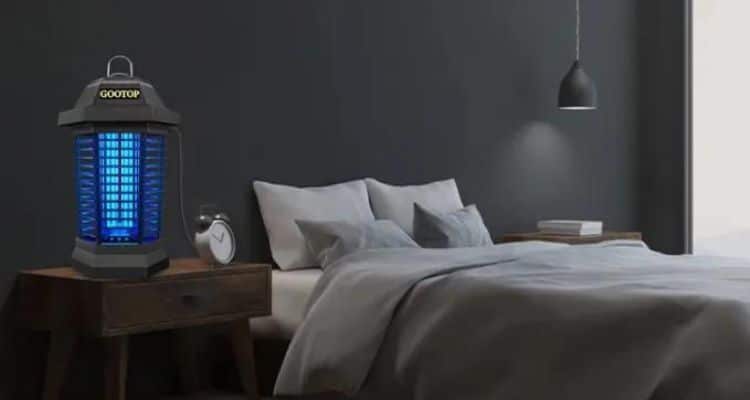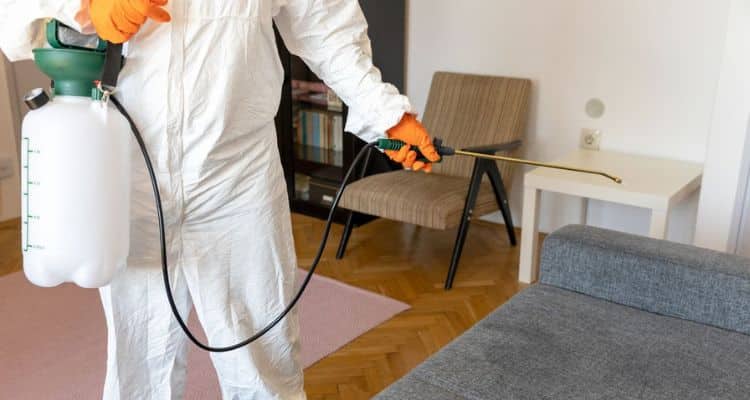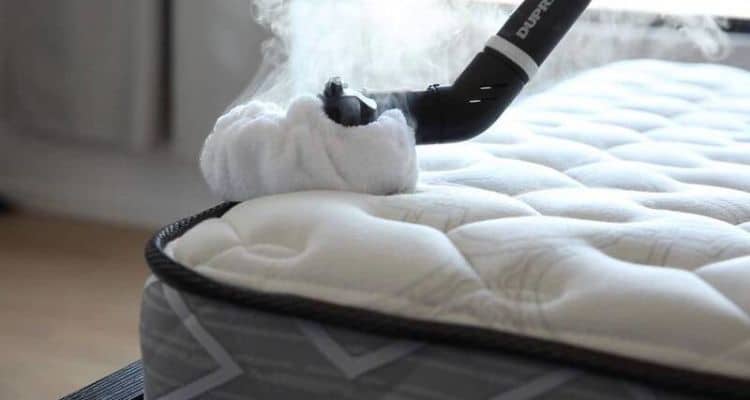In our attempt to rid our home of bed bugs, we employ a variety of tactics. Interestingly, some techniques are less efficient than others and may be damaging. So, how about those bug zappers? Are they helpful in preventing bed bugs?
So, let’s go deeper into the article to discover the truth regarding bed bug zappers.
Understanding Bed Bugs
Bed bugs (Cimex lectularius) are parasitic insects that feed on human blood and the blood of other warm-blooded animals. They are nighttime pests renowned for hiding in crevices and holes, making them difficult to identify and exterminate.

The presence of bed bugs can have severe health and economic consequences for individuals, families, and neighborhoods. Bed bug bites can cause various physical health issues, such as itching, redness, welts, and, in rare cases, secondary infections from scratching. Although bed bugs aren’t known to spread diseases, their bites can cause discomfort and sleep disruption.
The most immediate economic consequence of a bed bug infestation is the expense of pest control services. Professional eradication can be costly, and numerous treatments may be necessary to eradicate the infestation effectively.
Controlling bed bugs may be challenging for various reasons, such as their tenacity, nocturnal behavior, hitchhiking abilities, high prices, rejection of DIY solutions, the need for numerous treatments, and fast reproduction.
What Is a Bed Bug Zapper?
A bug zapper, an electrocuted insect controller, electric insect killer, or (insect) electrocute capture, is a device that catches and kills light-attracted flying insects.
A light source leads bugs to an electrical grid system, where they are killed by coming into contact with two high-voltage wires. The term derives from the unique onomatopoeic “zap” sound when an insect is electrified.

Bed bug zappers frequently employ UV light and specialized blowers to attract bed bugs to them, where they are electrocuted in an inside death chamber. However, alternative pest control methods are far more successful than the bed bug zapper.
These include chemical treatments, heat treatments, vacuuming and steam cleaning, mattress encasements, decluttering, and professional pest control.
The Science Behind Bed Bug Zappers
Bed bug zappers will use a captivating system to draw in bed bugs. This process might include replicating the heat, carbon dioxide (CO2), or other indicators used by bed bugs to identify their human hosts at night.
Zapper technology has limits and downsides when managing pests, such as bed bugs or other crawling and flying insects.
- Noise and Odour: When insects are electrified, bug zappers can emit noise and odor, which can be annoying in-home or outdoor situations.
- Maintenance: Zappers must be regularly maintained to remove dead insects and guarantee continuing performance. Cleaning may be an unpleasant process that may include managing dead insects.
- Safety concerns: Zappers utilize electrical power to kill bugs, which may constitute a safety concern, especially in locations where children or pets are present. Touching the zapper might result in an unintentional electric shock.
- Environmental Concerns: Using zappers can have negative ecological consequences, such as the unintended killing of beneficial bugs and the waste of electricity.
Are Bed Bug Zappers Effective?
Bed insect zappers are not successful in eliminating a bed bug infestation. These pests may hide in various places and are immune to multiple pesticides. To completely remove all of the bedbugs and their eggs, a thorough pest management strategy is ideal, including a mix of heat treatments, pesticides, and hand removal.
Washing and vacuuming the house thoroughly is also necessary to eradicate any lingering bugs or eggs. Instead of depending on fast solutions, employ tried-and-true pest management and preventive strategies to keep bed bugs out of your house. You may successfully kill bed bugs and avoid future infestations with the appropriate method.

However, various elements might impact zapper performance. The kind and positioning of the incentive (e.g., UV light, heat source), the dimension and arrangement of the electric grid or trap mechanism, and the general construction quality of the zapper can all affect its effectiveness. Environmental factors such as the existence of engaging light sources, climate, and wind can all have an impact on zapper efficacy. Insects might flee the zapper in response to strong competing light sources.
Potential Benefits and Drawbacks
A bed bug zapper is a safe and chemical-free method of killing bedbugs and their eggs. It is an environmentally friendly and cost-effective choice that does not need expert assistance. However, it may not be successful for severe infestations and must be used with other measures such as vacuuming, closing crevices, and discarding infested things.
Additionally, using just zappers to control bed bugs may consume time and resources while not successfully addressing the problem, enabling it to remain and potentially spread.
IPM is a sustainable and ecologically responsible pest control strategy that considers the larger ecological setting and minimizes pest management’s harmful effects. It encourages safer, more cost-effective, long-term solutions that preserve human well-being and the surroundings.
Alternatives to Bed Bug Zappers
It’s crucial to rely on tried-and-true techniques and solutions to successfully control and eliminate bed bugs while dealing with an infestation.
Heat treatments include warming contaminated areas to levels fatal to bed bugs and their offspring. When conducted correctly by specialists, this approach is quite successful. Heat treatments offer the benefit of hitting bed bugs where they hide.
Vacuuming can also assist in physically removing bed bugs and their offspring from surfaces, gaps, and crevices. Although it works well to reduce bed bug populations, it may only partially eradicate an infestation and needs constant maintenance.

Therefore, expert pest control services are critical in controlling and handling pest infestations, particularly bed bug infestations. Their knowledge, experience, and assets are crucial in dealing with pest problems effectively and safely.
Safety Concerns and Precautions
When utilizing a bed bug zapper, safety is of the highest priority. One must wear protective gear such as gloves and safety glasses and follow the manufacturer’s recommendations.
In addition, one should never leave the zapper in use unattended and keep it away from children and pets. The bed bug zapper can significantly reduce hazards by adhering to these safety recommendations.
Conclusion
As a result, using the bed insect zapper as the primary means of treatment would be ineffective. Bed bug infestations are difficult to remove entirely, and it generally takes perseverance and a mix of approaches.
Therefore, instead of depending entirely on zappers, other procedures like vacuuming and heat treatment would be the best strategies for removing bed bugs. However, contacting a pest control specialist is typically the best option for controlling bed bugs.

